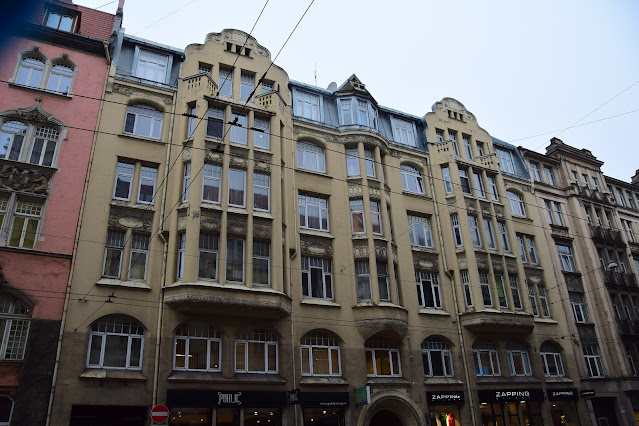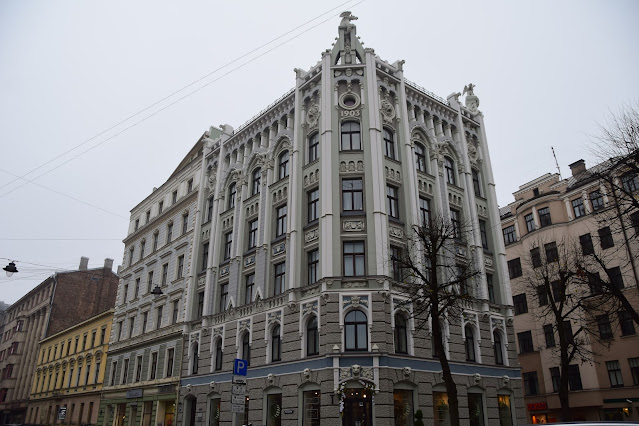In the order which I read them.
Mrs. Osmond. John Banville.
This book takes off from the point that Henry James's Portrait of a Lady ended: when Isabel Archer, now wife to Gilbert Osmond, is in England for the death of her cousin Ralph Touchett. It takes a very confident and ambitious writer to extend a novel by Henry James, and John Banville is both. Banville is not James, and it would probably be churlish to belabor that fact. Instead, Banville gives us a 21st century take, revealing explicitly what James only suggests: the specific nature of Osmond's psychological sadism. He also gives Isabel Archer a potent degree of agentivity, rescuing her from the passivity that bothers many readers of Portrait. However, in some ways her feminist strength and the female circumstances in which she is invited to live seem, if not anachronistic, perhaps a little blunt given the subtlety with which James has created her as a character. Despite some quibbles, I recommend this to any James fan.
How to be Both. Autumn. Ali Smith.
I discovered Ali Smith this year and read these two books. They are both stunning. Smith is beautiful stylist (gorgeous sentences) as well as remarkably provocative at structuring novels that don't read much like anything you've read before. Both have "plots," but it would be difficult to summarize them in any way that would do justice to the experience of reading one of her books. She asks the reader to do a lot of the work of making sense of how the novel is constructed. And to like her, you have to like this sort of thing. Both are great. Autumn is the first a planned quartet.
How to be Both. Autumn. Ali Smith.
I discovered Ali Smith this year and read these two books. They are both stunning. Smith is beautiful stylist (gorgeous sentences) as well as remarkably provocative at structuring novels that don't read much like anything you've read before. Both have "plots," but it would be difficult to summarize them in any way that would do justice to the experience of reading one of her books. She asks the reader to do a lot of the work of making sense of how the novel is constructed. And to like her, you have to like this sort of thing. Both are great. Autumn is the first a planned quartet.
Katalin Street. Magda Szabo.
Another, newly translated, novel by the great Hungarian novelist Magda Szabo. This one concerns a group of people who live on Katalin Street in Buda and are displaced, first by World War II and then by the Soviets. Melancholy and poignant. I did a kind of companion blogpost based on a fortepan essay here. A Long way from Home. Peter Carey.
I love Peter Carey and the myriad ways he invents Australia. This time the book is about a car race around the perimeter of Australia in 1954. As husband and wife team Irene and Titch Bobs circumnavigate the continent, they learn a lot about their selves, their marriage, and the strange, dangerous and wonderful country they live in. The Only Story. Julian Barnes.
I also love Julian Barnes, and one of my favorites is The Sense of an Ending (2011). This book is a kind of counterpart to the earlier one, as it records the story of a young man who falls in love with an older woman and who runs away with her to live together for many years. If you have read The Sense of an Ending (which I have to say is the better book of the two) then you will know how they relate. While this is not, to my mind, one of Barnes's very best, it is very good. And very good Barnes is better than most of what I read.
The Counterlife. Philip Roth. Asymmetry. Lisa Halliday.
Philip Roth died in 2018. For me, he was the greatest American writer of my lifetime. I decided to read The Counterlife, one of his books I admired most and one which I had not read in several years. I also read Lisa Halliday's Asymmetry, which is a book in some ways about and in response to Roth. I wrote about both these books here.
The Garden of the Finzi-Continis. Giorgio Bassani.
Set in Ferrara during the years leading to World War II, this novel by the Italian writer Giorgio Bassani recounts the story of Jewish children and later adolescents in the years before World War II. It centers around a young man, the narrator, who becomes friends with the fabulously wealthy Finzi-Contini family. Although the families of the narrator and the Finzi-Continis share seats in the synagogue, there are class differences between them. In the prologue we discover that almost none of the Finzi-Continis survived the war. This rather astonishing book, published in 1962, examines with extreme subtlety the growing and waning love affair between the Finzi-Contini daughter and the narrator, a relationship that is negotiated among class differences and the growing effects of the Racial Laws. The movie was also wonderful.
Mrs. Engels. Gavin McLeod.
I found this book this book on the long-list for the Booker Prize. (Looking at prize long and sort lists is a good way to discover new novels.) It's a fictional account of a real woman named Lizzie Burns who lived with Frederick Engels, first in Manchester, then London while he and Karl Marx were working together. Burns was a worker in the Manchester cotton mills, functionally illiterate, but very intelligent. Little is known of her or her sister Mary Burns, who was until her death Engel's lover. Mary and Lizzie apparently helped Engels navigate the Manchester slums, an experience that led to The Condition of the Working Class in England. It was interesting (and about something of which I knew almost nothing), and the character of Lizzie was well imagined.
Set in Ferrara during the years leading to World War II, this novel by the Italian writer Giorgio Bassani recounts the story of Jewish children and later adolescents in the years before World War II. It centers around a young man, the narrator, who becomes friends with the fabulously wealthy Finzi-Contini family. Although the families of the narrator and the Finzi-Continis share seats in the synagogue, there are class differences between them. In the prologue we discover that almost none of the Finzi-Continis survived the war. This rather astonishing book, published in 1962, examines with extreme subtlety the growing and waning love affair between the Finzi-Contini daughter and the narrator, a relationship that is negotiated among class differences and the growing effects of the Racial Laws. The movie was also wonderful.
History of Wolves. Emily Fridlund.
A creepy but compulsively readable book about a young girl whose parents live on a failed commune in Minnesota. Linda, the protagonist, comes to know a teacher who is accused of child pornography and a seemingly idyllic family who lives across the lake whose child she babysits. No one, however, is who they seem to be. And the resulting tension, particularly in relation to the family, mounts to an almost unbearable tragedy. Short-listed for the Man-Booker Prize. Also a debut novel.
Mrs. Engels. Gavin McLeod.
I found this book this book on the long-list for the Booker Prize. (Looking at prize long and sort lists is a good way to discover new novels.) It's a fictional account of a real woman named Lizzie Burns who lived with Frederick Engels, first in Manchester, then London while he and Karl Marx were working together. Burns was a worker in the Manchester cotton mills, functionally illiterate, but very intelligent. Little is known of her or her sister Mary Burns, who was until her death Engel's lover. Mary and Lizzie apparently helped Engels navigate the Manchester slums, an experience that led to The Condition of the Working Class in England. It was interesting (and about something of which I knew almost nothing), and the character of Lizzie was well imagined.
This book has been on my shelf for quite a long time. Calasso has been called a "literary institution of one." His books are wide-ranging explorations of cultural moments and traditions, such as Hindu mythology, Tiepelo, Kafka, Paris in the second half of the nineteenth century, Nabokov, Vedic sacrifices--or as in The Marriage of Cadmus and Harmony, Greek mythology. Drawing on an extraordinary number of classical sources, Calasso reads the patterns of Greek mythology, putting various stories together and in perspective to identify broad concerns of the Greeks. It is the stories of Greek mythology as you have never considered them. Written in a lyric and allusive style, this book tantalizes the reader. It is a book you have to fall into.
The Witch Elm. Tana French.
On a completely different note. Tana French is famous for her books about a Dublin Murder Squad. These books are loosely related but all are police procedurals and are very compelling. French not only constructs intricate plots, she also writes very nice prose. The Witch Elm, her latest, is a stand-alone. Although it involves a murder, it is not narrated from the point of view of the police. Rather, the narrator is a young man named Toby who has recently been victimized in a vicious robbery and who unwittingly finds himself in the middle of the a police enquiry initiated by the discovery of a body in a tree at his uncle's house, where he is currently recuperating. Toby, who previously considered himself very "lucky" (lots of friends, nice looking, great family, good job) is now undergoing a psychological breakdown as he tries to reconstruct his life and his sense of self. Plunged into the middle of this murder investigation, and not always trusting his own memory, he is jumpy, nervous, scattered and perhaps paranoid. It's quite a tour-de-force, and a challenging but fascinating job for the reader to live in this consciousness. Once I started it, I couldn't put it down. you,
#BestBooks2018

















































